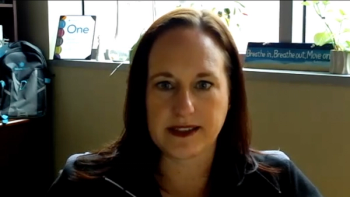
Oncology NEWS International
- Oncology NEWS International Vol 17 No 9
- Volume 17
- Issue 9
Infusion confusion-know your infusion definitions and codes
Since the passage of the Medicare Modernization Act of 2003, the changes in chemotherapy reimbursement have altered the economic model of community oncology practices.
Since the passage of the Medicare Modernization Act of 2003, the changes in chemotherapy
reimbursement have altered the economic model of community oncology practices.
No longer built around in-office drug provision, today’s community doctors need to control overhead costs and capture all billable services.
To keep abreast of complex billing and coding modifications, your practice management staff has to do their homework.
Reimbursement hotlines from the major cancer organizations still receive calls regarding the nuances of CPT infusion terminology. Below is a Q&A that highlights the infusion coding issues that your back-office might be grappling with.
Q: Our office is still confused. Has there been any definition or clarification about concurrent infusions?
A: The AMA defines a concurrent infusion as one in which two drugs are simultaneously infused or multiple infusions are provided through the same intravenous line. It’s important to note, the concurrent infusion code for nonchemotherapy infusions only is 90768.
Q: If a second drug is added to the bag for intravenous administration, can the administration of the second drug be reported?
A: No, since more than one substance in a single bag is considered one infusate and one infusion. In this case, only one administration can be reported, and the J code for each substance is reported separately.
Q: If two drugs are infused simultaneously but hung in separate bags, is it still considered a concurrent infusion?
A: Absolutely. Even if multiple drugs are hung separately, the administration is billed as concurrent because the drugs are running simultaneously. In this case, you report an initial administration for the first drug and a concurrent administration for the second drug.
Q: How do I bill if two drugs are mixed in the same bag and administered for 15 minutes?
A: If an infusion lasts for 15 minutes or less, it meets the definition of a push and the appropriate push code (initial or subsequent) should be billed. In this case, the infusion would be reported as one push; however, each substance or drug would be reported separately.
Q: Are there guidelines for reporting the duration of an infusion?
A: Yes. After the first hour of an infusion, round infusion times to the nearest 30 minutes. For infusions of 30 minutes or less, round down; for infusions of 30 minutes or more, round up.
Q: When does the infusion time begin and end?
A: The infusion time begins when the infusion starts, and the time reflects the time the drug is actually being administered.
Time spent before and after the infusion is not counted in the infusion time. Also, timing should start over when a different drug is started.
Remember, paying attention to the fine points of infusion timing is important for your billing and recordkeeping, not to mention your bottom line.
Articles in this issue
over 17 years ago
Japanese team discovers more cancer falloutover 17 years ago
Panel pans FDG-PET for new Medicare oncology coverageover 17 years ago
Sen. Kennedy's brain tumor puts spotlight on new treatmentover 17 years ago
Precise resection in colon cancer may boost survivalover 17 years ago
Payer’s budget to get right targeted drug to right patientover 17 years ago
PET brings treatment changes in majority of colon ca casesover 17 years ago
High death rate brings prostate ca vaccine trial to a haltover 17 years ago
Radiofrequency ablation eliminates nondysplastic BEover 17 years ago
Childhood cancer research gets $30 million from fedsNewsletter
Stay up to date on recent advances in the multidisciplinary approach to cancer.































































































